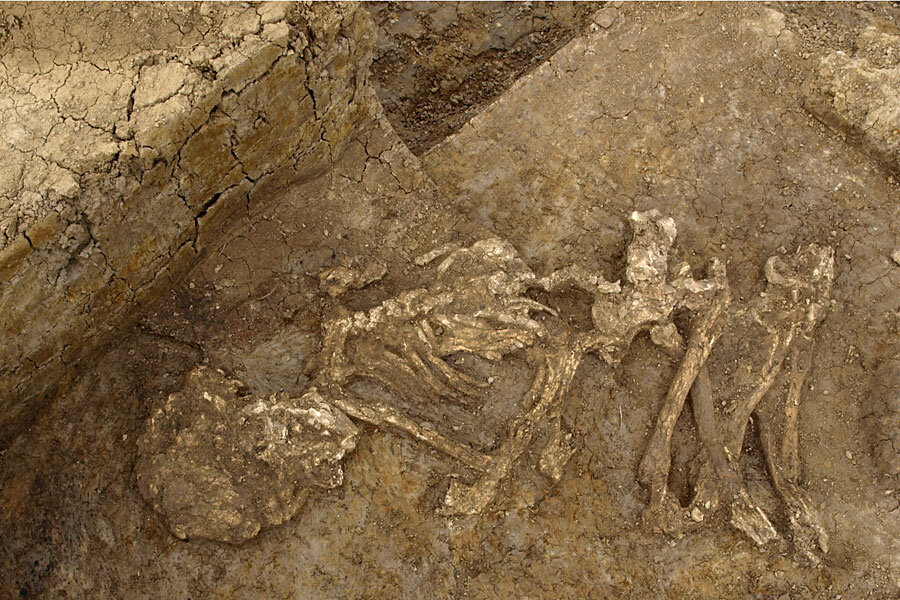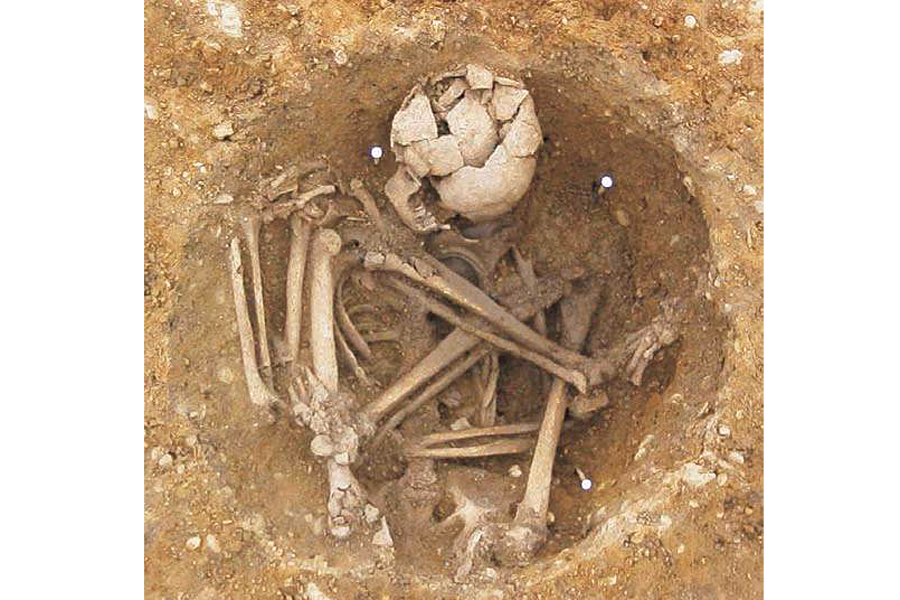Were Bronze Age Brits making mummies?
Loading...
Mummies aren’t just Egyptian pharaohs or toilet paper-wrapped children on Halloween. The ancient British also practiced mummification, researchers say.
A significant amount of skeletons unearthed from the Bronze Age in Great Britain show strong evidence of mummification, according to a paper published Wednesday in the journal Antiquity.
Researchers compared ancient British skeletons with the bones of known mummies, including one from Ireland and one from Yemen. They found similarities indicating that some of the British bodies had been mummified too.
“Mummifying a body is a lot easier than people think it is. The ancient Egyptians went about it in an incredibly elaborate and complex way, but those kind of processes aren’t necessary,” says lead author Tom Booth.
“You can mummify things temporarily or in an incomplete way, even by just leaving a body out in the sun for a little while in some cases,” he says.
Dr. Booth and his team studied Bronze Age skeletons from across Britain that suggested a variety of preservation techniques were used.
Bones found at the archeological site Cladh Hallan in Scotland displayed evidence of having been buried in an acidic environment, but they were found in an alkaline one. Researchers hypothesized that these bodies were buried in peat bogs, a convenient acidic environment for prehistoric Scots. After a few months they were dug up. The peat bog would have preserved the soft tissue, thus producing a mummy.
In other areas, like Kent, the scientists saw evidence of burning on the bones. This suggests the bodies may have been smoked, perhaps over a fire, to preserve them.
The researchers only had skeletons to work with – not soft tissue. And it’s difficult to say a body has been mummified when there’s no preserved soft tissue left. But fortunately for Booth and his colleagues, the bones still held clues.
“Most archeological bones are filled with tiny tunnels that are produced by bacteria,” says Booth. “There is growing evidence that this is because these tunnels are produced by bacteria originating in an individual’s gut.”
Internal organs are often removed in the mummification process.
“If you bury a body in the ground with its organs all intact, the bones are going to be extensively degraded by bacteria and that’s usually what we find,” Booth says.
After examining about 300 skeletons from across Britain, the researchers noticed that nearly half of those bones had little or no tunneling.
“In a lot of cultures where you get mummification of bodies that are kept above ground, it’s usually seen as something of a conduit between the living and the dead where people can use it to commune with the ancestors and it’s part of a kind of ancestor worship interaction,” Booth says of the importance of mummies.
But in Bronze Age Britain, there may have been other factors in preserving the dead.
With agriculture increasing in intensity and importance during that period about 4,200 to 2,750 years ago, ownership of land and resources may have been significant.
“These mummified bodies could be used to legitimize an individual’s or family’s claim on land,” Booth says. “If someone challenged your land or claim to resources, you could bring out the body of your deceased ancestor that farmed this land hundreds of years ago and say, 'they were here. They’re my ancestor. I have legitimate claim to this land.'"
These same economic tensions likely led to the creation of early elite classes. Mummified ancestors could have reinforced and legitimized this new ruling class too.
As these preserved dead relatives were likely kept around the house, “it’s possible that a lot of the mummies that were produced were never actually buried,” says Booth. Instead, he says, they were likely kept above ground until they fell apart.
Booth believes that such a connection with the dead helped the living mourn their relatives and face the prospect of death. “I think it can help us deal better with our own mortality and the death of others when we come into contact with human bodies,” he says.
“People have this idea that burial is always default and that all societies will avoid contact with human remains as much as possible,” Booth says. With that mindset, “Those that don’t are bizarre, on the fringes or exotic.”
But burial has been the norm in Great Britain only in recent centuries, according to Booth.
In the scheme of British history, he says, “we are the bizarre ones.”









